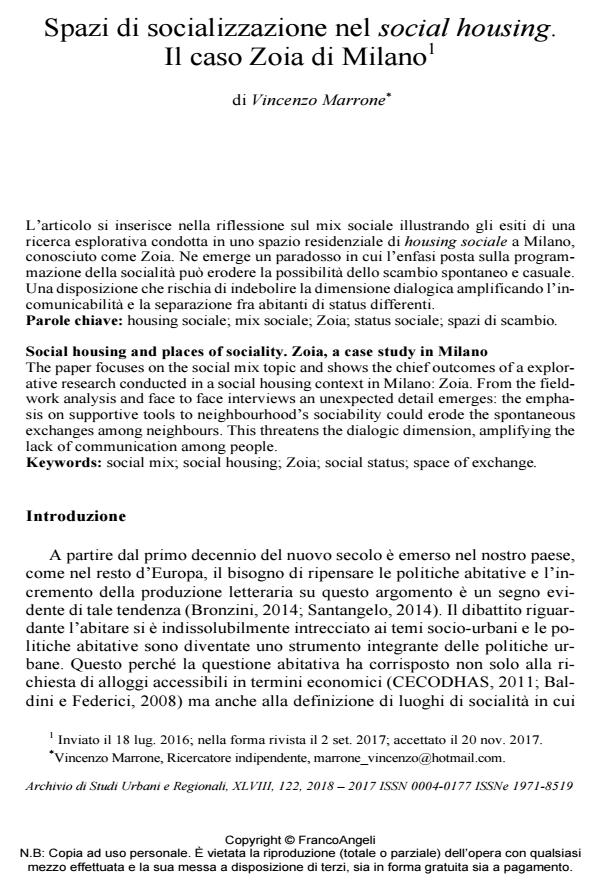Social housing and places of sociality. Zoia, a case study in Milano
Journal title ARCHIVIO DI STUDI URBANI E REGIONALI
Author/s Vincenzo Marrone
Publishing Year 2018 Issue 2018/122
Language Italian Pages 22 P. 53-74 File size 128 KB
DOI 10.3280/ASUR2018-122004
DOI is like a bar code for intellectual property: to have more infomation
click here
Below, you can see the article first page
If you want to buy this article in PDF format, you can do it, following the instructions to buy download credits

FrancoAngeli is member of Publishers International Linking Association, Inc (PILA), a not-for-profit association which run the CrossRef service enabling links to and from online scholarly content.
The paper focuses on the social mix topic and shows the chief outcomes of a ex-plorative research conducted in a social housing context in Milano: Zoia. From the fieldwork analysis and face to face interviews an unexpected detail emerges: the emphasis on supportive tools to neighbourhood’s sociability could erode the spon-taneous exchanges among neighbours. This threatens the dialogic dimension, am-plifying the lack of communication among people.
Keywords: Social mix; social housing; Zoia; social status; space of exchange.
- Cohousing in Italy Manuela Maggio, pp.25 (ISBN:978-3-031-83276-5)
Vincenzo Marrone, Spazi di socializzazione nel social housing. Il caso Zoia di Milano in "ARCHIVIO DI STUDI URBANI E REGIONALI" 122/2018, pp 53-74, DOI: 10.3280/ASUR2018-122004